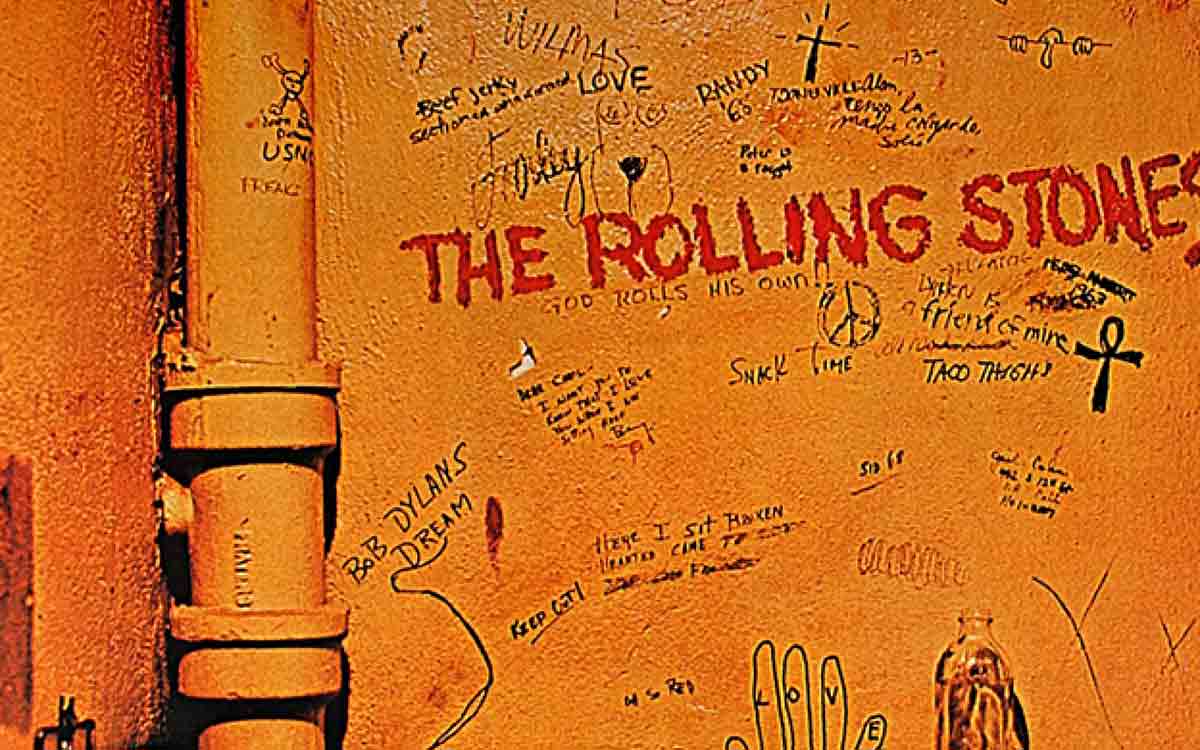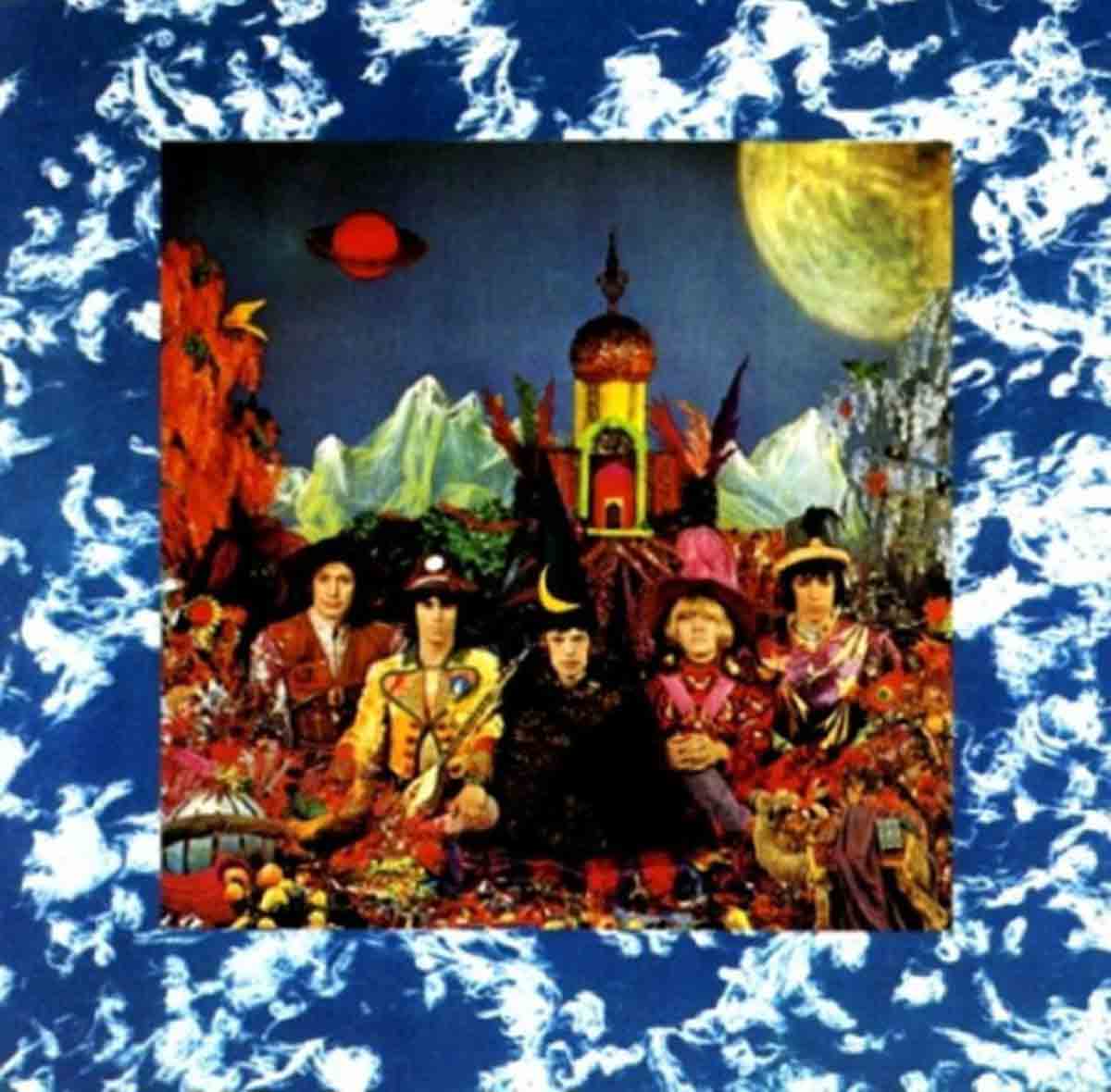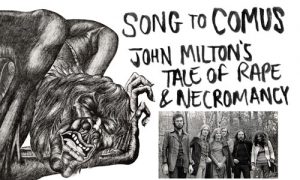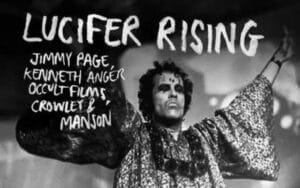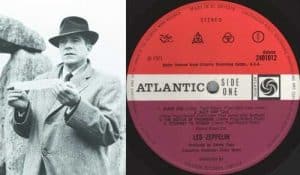DOM COOPER discusses Sympathy for the Devil and other Rolling Stones occult dabblings as the legendary British band celebrates its 50 year anniversary this week.
“Please allow me to introduce myself, I’m a man of wealth and taste, I’ve been around for a long, long year, stole many a man’s soul and faith …”
These are the opening lines of the song Sympathy for the Devil, which set up the following six minute-plus epic in which the singer reveals the exploits of his protagonist – how he aided Pilate in death (a reference to the betrayal and crucifixion of Jesus), and how he killed the Czar in St Petersburg (referring to the violent Russian revolution of 1917 and the subsequent massacre of the Romanov family in 1918).
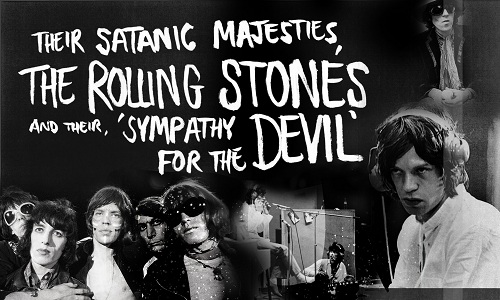
After each verse he proclaims, “Pleased to meet you, hope you guessed my name, but what’s puzzling you is the nature of my game.”
The story behind the Sympathy for the Devil
The song is the lead track from the 1968 album Beggars Banquet, released by the infamous Rolling Stones, tyrants of the sixties pop chart.
The Rolling Stones need no introduction, and by this time they had become household names, with the classic line up of Mick Jagger, Keith Richards, Brian Jones, Bill Wyman and Charlie Watts.
They had become familiar faces both in the musical press and on television sets.
The national press, however, had labelled them evil, suggesting that you should lock up your daughters to prevent those princes of darkness inducting them into a debauched lifestyle of sex, drugs and rock and roll.
Their previous album in 1967 was called Their Satanic Majesties Request but its cover portrayed a different story to its title.
The band resemble fancy dress goers instead of satanic followers. Attired as medieval jesters and circus hands, Jagger looks like Mickey Mouse in Fantasia rather than a practicing magician.
They may have been seduced by occult themes and imagery, but I doubt they ever dabbled into its applied side.
Their dark side was a romantic notion fuelled by their manager Andrew Loog Oldham, the constant press frenzy and a handful of songs (tunes that are cousins of their initial love, the blues, dubbed the devil’s music).
A run of bad luck and coincidence plagued them throughout their career, perpetuating the idea they were in league with the devil.
Almost a year after the albums release, guitarist Brian Jones was found dead in his swimming pool in mysterious circumstances.
The band would go on to perform a tribute concert in Hyde Park, releasing half dead butterflies (not on purpose, they had died of the heat exhaustion in their box, and the dead ones were thrown out by the bands Hells Angels helpers) into the air during a recital of a Shelley poem.
The same year as Beggars Banquet, Jagger acted in Donald Cammel’s film Performance, co-directed with Nicholas Roeg.
He stars as alter-ego singer Turner, who shelters a gangster in hiding named Chas.
The film plays with notions of identity, influenced by Borges and Artaud’s rumination on madness and performance.
Eventually the two men become one, Turner and Chas in dual possession, like a swinging sixties meets Freud version of H.P. Lovecrafts The Thing On The Doorstep.
Author Alan Moore recently played with The Rolling Stones reputation by basing a band on them in his graphic novel, ‘The League of Extraordinary Gentlemen, Century: 1969‘.
In the story he has the Brian Jones character called Basil killed in his pool by robed occultists.
Before the owner of a magic shop visits the lead singer Terner and they hatch a plan to birth a moonchild at a tribute concert to the dead guitarist.
This is the Stones as myth as fiction.
The image of the band on Beggars Banquet is closer to the truth, here they are depicted as medieval lords, masters of their own kingdom no less.
Cavorting at a feast, post fight, pre-wenching and mid roast pig.
I’m guessing that Jagger and co had grown tired of the evil tag, Which is probably fair enough when they were surrounded by the world’s daily media.
Television and press showing the horror of war and other atrocities on the hour every hour.
What was a little dope compared to the slaughter of millions you can hear them say.
I believe the singer used the song to point out that fact – many a thing had been done now and in the past that was far worse than what they got up to between shows.
Jagger wrote most of the song himself, directing the others and accepting musical help from Richards, who as usual controlled silently.
This can be seen clearly in the ’68 film ‘One Plus One’ directed by auteur Jean-Luc Godard.
A great snapshot of them working, it reveals the band play through the song in the spacious Olympic studios.
As is Godards way, footage of The Stones is interspersed with political scenes, voice overs and tracking shots.
In the film we get to see the band morph the track from a blues ballad into the funky samba it became. Jagger said he got the idea for the song from one of his French books, possibly the poet Baudelaire, but any attempts to find the reference again had failed.
I think that’s because he misremembered.
Strikingly many people, including me, have noticed the similarity with Mikhail Bulgakov’s ’67 novel The Master and Margarita.
In the novel, the devil appears in Moscow as a suave learned gentleman with a great knowledge of history and a wicked streak.
Accompanying him are a retinue of companions, including an overweight, man-sized, cigar smoking, black cat called Behemoth.
Near the beginning of the tale the devil has a conversation about Jesus and Pilate, just as the song mentions.
The devil then proceeds to play havoc with the populace by pretending to be a stage magician, beheading a couple of people and enticing the lady Margarita.
Translated into French at the time, I guess Jagger mixed up Baudelaire with The Master and Margarita.
The song continues, telling of World War II’s ‘blitzkrieg’ and the assassination of the Kennedy’s (sadly amended to plural when Bobby’s death was announced during recording of the song).
This trail of anarchy is backed by catchy woo-woo backing vocals and a driving beat.
By now we’ve realised the singer is the devil, delighting at having a hand in these world changing events, revelling in his destruction with wit and charm.
Could these events be the true face of Satan?
Whether it was his intention or not, the song made Jagger into the protagonist.
People took the theatre of ‘Sympathy for the Devil’ for the singers own beliefs and the whole satanist tag perpetuated.
I think if Jagger had made a pact with the devil and was really studying the occult he would have locked himself away and spent all his energy searching for a youth elixir.
The truth is that the rumour and myth makes the band cool, and we like to believe in it, I for one applaud that notion.
The band didn’t manage to birth a moonchild or cause the apocalypse, instead they’ve kept on rocking into their 50th year.
Conclusion
For me if the devil owned a music, one you could groove to, then ‘Sympathy for the Devil’ wouldn’t be a bad choice, I suspect though his music is an unlistenable torment.
Back in in my youth I regularly attended a local indie disco.
The first strains of the song would signal the end, and after the needle had stopped my friends and I would stumble out into the night with the refrain of the devil whirling round in our heads.
DOM COOPER is a graphic designer, illustrator and writer. He co-runs Rif Mountain Records and plays in The Straw Bear Band. Previously he played in The Owl Service, The Fiends and Wolfgang & The Wolf Gang. Dom is obsessed with music, and is interested in British folklore, history and culture. Follow him at @domcooperdesign | Find him at www.domcooper.com


